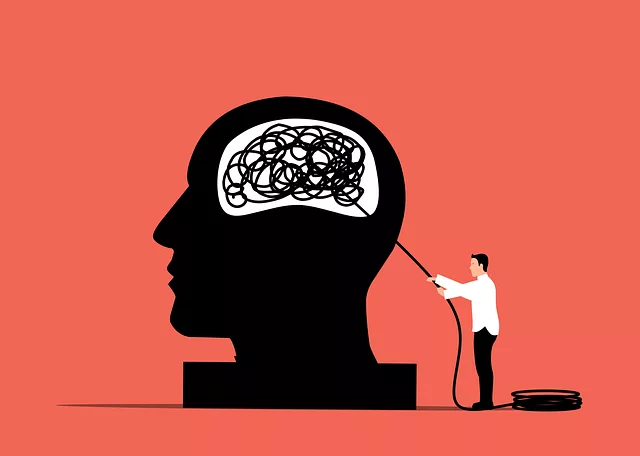Phobia-specific anxiety, marked by intense irrational fears leading to avoidance, significantly impacts daily life. Cognitive-behavioral therapy (CBT) and exposure therapy are effective anxiety treatments. CBT challenges negative thought patterns while exposure therapy gradually exposes individuals to fears in a controlled setting. Personalized treatment plans tailored to unique needs and triggers, combined with building resilience through coping strategies like mindfulness and cognitive reframing, enhance management. Strong support networks including family, friends, online communities, and professional resources further enrich anxiety treatment.
“Unraveling the complexities of phobia-specific anxiety and offering a comprehensive guide to effective treatments. This article delves into the root causes, common manifestations, and various therapeutic approaches aimed at managing this debilitating condition. From cognitive behavioral therapy (CBT) and exposure therapy to alternative remedies, we explore personalized strategies for relief. Additionally, we highlight the importance of building resilience, coping mechanisms, and supportive resources, providing a holistic framework for overcoming phobia-related anxiety and reclaiming control over daily life.”
Understanding Phobia-Specific Anxiety: A Comprehensive Overview

Phobia-specific anxiety is a profound and often debilitating condition that demands tailored anxiety treatment. It involves an intense, irrational fear triggered by specific objects, situations, or entities, leading to avoidance behaviors and significant distress. This fear can be so overwhelming that it interferes with daily life, affecting one’s ability to work, socialize, and engage in various activities.
Understanding phobia-specific anxiety requires recognizing its complex interplay between the mind and body. Cognitive-behavioral therapy (CBT) is a recognized anxiety treatment approach that effectively targets these fears. CBT helps individuals identify and challenge negative thought patterns associated with their phobias, gradually exposing them to the feared object or situation in a safe and controlled manner. This process, known as exposure therapy, enables people to confront their anxieties head-on, reduce avoidance behaviors, and gain a greater sense of control over their lives.
Common Phobias and Their Impact on Daily Life

Common phobias, such as arachnophobia (fear of spiders) or acrophobia (fear of heights), can significantly impact an individual’s daily life and overall well-being. These specific fears often go beyond a mere aversion; they are intense, irrational anxieties that can cause individuals to avoid certain situations, places, or objects entirely. For example, someone with arachnophobia may find it impossible to enter their own home without constantly checking for spiders, disrupting their sense of security and normal routine.
The impact extends further than just discomfort; these phobias can lead to severe anxiety, affecting various aspects of life, including social interactions, career choices, and overall mental health. Anxiety treatments tailored to specific phobias aim to help individuals confront and manage these fears, allowing them to regain control over their lives and engage in activities without constant dread or avoidance.
Cognitive Behavioral Therapy (CBT): Unlocking Mindfulness

Cognitive Behavioral Therapy (CBT) is a highly effective anxiety treatment that focuses on identifying and changing negative thought patterns and behaviors. By unlocking mindfulness, CBT empowers individuals to recognize and challenge distorted thinking, ultimately reducing symptoms of phobia-specific anxiety. This therapy encourages patients to adopt healthier coping strategies, enabling them to face their fears in a controlled manner.
Through structured sessions, CBT helps individuals understand the connection between thoughts, feelings, and behaviors. By learning mindfulness techniques, they can stay present during anxious moments, observe their thoughts without judgment, and replace negative thought loops with more realistic and positive ones. This process not only provides relief from immediate anxiety but also offers long-term benefits in managing phobia-related symptoms effectively.
Exposure Therapy: Confronting Fears Head-On

Exposure therapy is a powerful technique within the realm of phobia-specific anxiety treatments, offering a direct approach to confronting and overcoming fears. This therapeutic method involves gradually exposing individuals to situations or objects they fear, allowing them to face their anxieties in a controlled environment. By doing so, patients learn to manage their responses and realize that their feared outcomes are unlikely to occur.
The process begins with identifying specific phobias and the triggers associated with them. Therapists then create a structured plan, starting with less intimidating scenarios and progressively moving towards more challenging ones. Through this step-by-step exposure, individuals can develop coping strategies and reduce the intensity of their anxiety responses over time. Eventually, they gain a sense of control, dispelling the power their fears held over them.
Alternative Therapies for Phobia Management

In addition to traditional talk therapies like cognitive-behavioral therapy (CBT), there are several alternative approaches gaining recognition for managing phobia-specific anxiety. Techniques such as exposure therapy, where individuals gradually confront their fears in a safe environment, have proven effective in desensitizing patients and reducing anxiety responses over time. Another promising method is eye movement desensitization and reprocessing (EMDR), which involves bilateral stimulation—like side-to-side eye movements or taps—while recalling traumatic memories, helping to process and resolve them.
Mindfulness practices, including meditation and deep breathing exercises, offer a non-invasive way to manage anxiety symptoms. These techniques encourage individuals to focus on the present moment, reducing the intensity of fear responses triggered by phobic stimuli. Furthermore, complementary therapies like art therapy, music therapy, and acupuncture have shown potential in alleviating anxiety and providing alternative avenues for self-expression and relaxation during the treatment process.
Personalized Treatment Plans: Tailoring Relief to You

Personalized Treatment Plans: Tailoring Relief to You
In addressing phobia-specific anxiety, a one-size-fits-all approach simply won’t do. That’s why leading anxiety treatments emphasize the importance of personalized plans. Every individual experiences fear and anxiety differently, shaped by their unique life experiences and triggers. Effective treatment starts with understanding your specific needs, fears, and responses.
Therapists collaborate closely with you to create a tailored plan that addresses your particular phobia, whether it’s arachnophobia, agoraphobia, or social anxiety. This may involve cognitive-behavioral therapy (CBT), exposure therapy, relaxation techniques, or other evidence-based methods. By focusing on what works best for you, personalized treatments offer the most effective path to managing and overcoming your anxiety.
Building Resilience and Coping Strategies

Building resilience is a key component of phobia-specific anxiety treatments. By equipping individuals with effective coping strategies, therapists help them navigate and manage their symptoms in various settings. This involves teaching mindfulness techniques to remain calm under stress, cognitive reframing to challenge negative thoughts, and exposure therapy to gradually face fears in safe, controlled environments. These tools empower individuals to confront their phobias head-on, reducing anxiety responses over time.
Additionally, fostering resilience encourages a growth mindset, where individuals view challenges as opportunities for personal development rather than insurmountable barriers. This shift in perspective allows them to adapt and recover from stressful situations, reinforcing a sense of control and self-efficacy. As a result, they become better equipped to manage anxiety symptoms and lead more fulfilling lives.
Support Systems and Resources for Lasting Change

Having a strong support system is crucial for enduring and successful anxiety treatment. Family, friends, or even support groups can offer invaluable assistance during recovery. These relationships provide emotional backing, encouragement, and understanding, which are essential components in managing fear and anxiety. Many individuals find solace in sharing their experiences with others who have faced similar challenges, fostering a sense of belonging and community. Online platforms and local communities dedicated to mental health awareness also serve as rich resources for those seeking guidance and support.
Additionally, utilizing professional resources enhances the effectiveness of anxiety treatment. Therapists, counselors, or support hotlines provide specialized knowledge and tools tailored to individual needs. These professionals offer evidence-based strategies, such as cognitive-behavioral therapy (CBT), which has proven effective in addressing specific phobias. By combining personal connections with professional guidance, individuals can navigate their anxiety journeys with increased resilience and a higher likelihood of long-term success.
